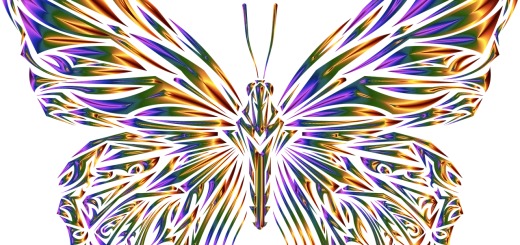Archetypes and Personality: Finding Your True Self

Looking for more amazing products? Check out our online store and explore our collection here! Happy shopping!
Before diving in, please note: This post is for informational purposes only. If you’d like to know more about how we approach topics, feel free to check out our friendly Disclaimer Page.
Hey there, amazing readers! 
We’re committed to delivering quality posts, and your support (even just sticking around despite the ads) means everything to us. So, bear with us, and thanks for helping us keep the good vibes rolling. Now, on to the fun stuff!
TRANSLATE BUTTON AT THE END OF THE ARTICLE
A Quick Overview
Archetypes play a crucial role in shaping our personalities and understanding our true selves.
These universal symbols, as theorized by Carl Jung, help us navigate the complexities of our inner world and behavior patterns.
By identifying our dominant archetypes, exploring our shadow selves, and integrating opposing aspects of our personalities, we can achieve personal growth and find balance and harmony in our lives.
This article delves into the significance of archetypes in personality development and provides practical guidance on how to uncover your true self through the lens of archetypal patterns.
The Role of Archetypes in Personality
Archetypes are inherent symbols or patterns that are present in the collective unconscious, influencing our thoughts, behaviors, and emotions.
These universal symbols are shared across cultures and societies, representing fundamental aspects of human experience.
By recognizing and understanding these archetypes within ourselves, we can gain insights into our deepest motivations, fears, and desires.
Whether we are aware of it or not, archetypes play a significant role in shaping our personalities and guiding our actions.
Understanding Carl Jung’s Theory
Carl Jung, a Swiss psychiatrist and psychoanalyst, introduced the concept of archetypes as part of his analytical psychology theory.
According to Jung, archetypes are ancient, universal symbols that reside in the collective unconscious, shaping human behavior and experiences.
These archetypes manifest in various forms, such as the Hero, the Shadow, the Wise Old Man, and the Trickster.
Jung believed that by exploring these archetypes, individuals could gain a deeper understanding of themselves and achieve personal growth.
How Archetypes Shape Behavior
Archetypes influence our behavior by tapping into our subconscious minds and triggering specific responses.
For example, the Hero archetype inspires courage, resilience, and a sense of purpose, driving individuals to overcome challenges and achieve greatness.
On the other hand, the Shadow archetype represents our darker impulses, fears, and unresolved issues, often leading to self-sabotage and destructive behaviors.
By recognizing how archetypes influence our thoughts and actions, we can make conscious choices to align our behavior with our true selves.
Identifying Your Dominant Archetypes
To identify your dominant archetypes, reflect on recurring themes, symbols, and patterns in your life.
Pay attention to your dreams, fantasies, and aspirations, as they often contain clues to your underlying archetypal patterns.
You may resonate strongly with certain archetypes, such as the Lover, the Magician, or the Caregiver, which reflect key aspects of your personality and values.
By acknowledging and embracing these dominant archetypes, you can gain a deeper understanding of yourself and leverage your strengths to achieve personal fulfillment.
Exploring the Shadow Self
The Shadow self represents the hidden, unconscious aspects of our personalities that we often repress or deny.
It encompasses our fears, insecurities, and unresolved traumas, which can manifest in destructive behaviors and negative patterns.
By confronting and integrating our Shadow selves, we can heal past wounds, embrace our vulnerabilities, and achieve inner wholeness.
Shadow work involves acknowledging and accepting these darker aspects of ourselves with compassion and self-reflection, leading to profound personal transformation.
Integrating Opposing Archetypes
Opposing archetypes, such as the Hero and the Villain, the Lover and the Warrior, or the Sage and the Fool, represent conflicting aspects of our personalities.
By integrating these polarities, we can achieve balance and harmony within ourselves.
For example, balancing the Warrior’s assertiveness with the Lover’s compassion can lead to more authentic relationships and emotional resilience.
Embracing the duality of our nature allows us to harness the strengths of opposing archetypes and cultivate a more holistic sense of self.
Embracing Your True Self
Embracing your true self involves accepting all aspects of your personality, including your strengths, weaknesses, light, and shadow.
By embracing your dominant archetypes and integrating opposing qualities, you can align with your authentic self and live a more fulfilling life.
True self-acceptance requires self-awareness, self-compassion, and a willingness to grow and evolve.
By embracing your true self, you can cultivate a deeper sense of purpose, connection, and inner peace.
Overcoming Archetypal Patterns
To overcome limiting archetypal patterns, it is essential to engage in self-reflection, therapy, or personal development practices.
By identifying recurring themes and behaviors that no longer serve you, you can make conscious choices to break free from negative patterns.
For example, if you notice a pattern of self-sabotage linked to the Victim archetype, you can work on empowering yourself and taking ownership of your actions.
Overcoming archetypal patterns requires courage, commitment, and a willingness to confront your fears and limitations.
Achieving Personal Growth
Achieving personal growth through archetypes involves a process of self-discovery, transformation, and integration.
By exploring your dominant archetypes, shadow self, and opposing qualities, you can gain valuable insights into your psyche and motivations.
Personal growth requires inner work, reflection, and a commitment to lifelong learning and development.
By embracing archetypal patterns as tools for self-awareness and growth, you can unlock your full potential and lead a more authentic and fulfilling life.
Finding Balance and Harmony
Finding balance and harmony within yourself involves embracing the full spectrum of your archetypal qualities and integrating them into a cohesive whole.
By acknowledging and honoring both your light and shadow aspects, you can achieve a sense of inner wholeness and authenticity.
Balancing opposing archetypes allows you to navigate life’s challenges with grace, resilience, and wisdom.
Finding balance and harmony is an ongoing process that requires self-awareness, self-compassion, and a willingness to embrace all aspects of your true self.
Applying Archetypes in Everyday Life
You can apply archetypes in everyday life by using them as tools for self-reflection, decision-making, and personal growth.
By recognizing archetypal patterns in yourself and others, you can gain a deeper understanding of motivations, behaviors, and relationships.
For example, if you notice the Warrior archetype emerging in a conflict situation, you can choose to channel its assertiveness constructively rather than reactively.
Applying archetypes in everyday life empowers you to make conscious choices, cultivate self-awareness, and live in alignment with your true self.
Seeking Professional Guidance
If you are struggling to identify your dominant archetypes, integrate opposing qualities, or overcome archetypal patterns, seeking professional guidance can be beneficial.
A therapist, counselor, or coach trained in archetypal psychology can provide insights, tools, and support to help you navigate your inner landscape and achieve personal growth.
Professional guidance offers a safe space for self-exploration, healing, and transformation, allowing you to uncover hidden aspects of yourself and cultivate a deeper sense of self-awareness and authenticity.
Conclusion
In conclusion, archetypes play a significant role in shaping our personalities and guiding us towards self-discovery and personal growth.
By understanding Carl Jung’s theory, identifying our dominant archetypes, exploring our shadow selves, and integrating opposing qualities, we can achieve a deeper sense of wholeness and authenticity.
Embracing our true selves involves accepting all aspects of our personalities, including our strengths, weaknesses, light, and shadow.
By applying archetypes in everyday life and seeking professional guidance when needed, we can unlock our full potential and live more fulfilling and purposeful lives.
Embrace the journey of self-discovery through archetypes and uncover the secrets of your true self.

The Enlightenment Journey is a remarkable collection of writings authored by a distinguished group of experts in the fields of spirituality, new age, and esoteric knowledge.
This anthology features a diverse assembly of well-experienced authors who bring their profound insights and credible perspectives to the forefront.
Each contributor possesses a wealth of knowledge and wisdom, making them authorities in their respective domains.
Together, they offer readers a transformative journey into the realms of spiritual growth, self-discovery, and esoteric enlightenment.
The Enlightenment Journey is a testament to the collective expertise of these luminaries, providing readers with a rich tapestry of ideas and information to illuminate their spiritual path.
Our Diverse Expertise
While our primary focus is on spirituality and esotericism, we are equally passionate about exploring a wide range of other topics and niches 

To ensure we provide the most accurate and valuable insights, we collaborate with trusted experts in their respective domains 
Our blog originally focused on spirituality and metaphysics, but we’ve since expanded to cover a wide range of niches. Don’t worry—we continue to publish a lot of articles on spirituality! Frequently visit our blog to explore our diverse content and stay tuned for more insightful reads.
Hey there, amazing reader! 
Check out our store here and take a peek at some of our featured products below! Thanks for being awesome!











